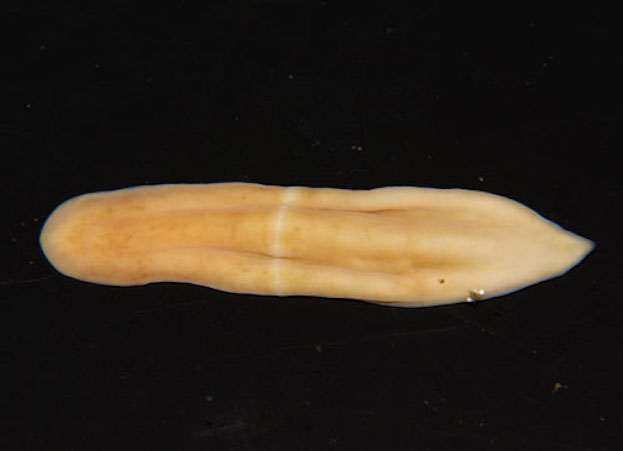Buttless Wonder: New Worm Has No Anus

A bizarre new species of marine worm lacks a number of internal features common to other animals — including an anus, new research shows.
The strange, pale-orange creature, scientifically known as Xenoturbella japonica, was found on the seafloor of the western Pacific Ocean. A team of scientists from the University of Tsukuba in Japan revealed that the worm lacks certain features common among more complex animals, such as a centralized nervous system, kidneys and an anus. However, the creature does have an oval-shaped mouth, implying that its digestive system has only one opening.
This new species belongs to a group of worms that holds a controversial place in the tree of life, as a sister group of the Bilateria — the group that contains the most-complex animals, including humans. Therefore, the discovery of this new species could shed light on the origin of animals' complex internal body parts, the scientists in the new study said in a statement. [In Photos: Spooky Deep-Sea Creatures]
In the study, the researchers examined two specimens of X. japonica, including a female about 2 inches (5 centimeters) in length and a juvenile about 0.4 inches (1 cm) in length. The scientists used micro-computed tomography (micro-CT) scans to reveal the inner workings of the worm, and its "frontal pore," which traditional methods are unable to capture, according to the statement.
To see where X. japonica fits in the tree of life, the team also extracted DNA from the worm cells' nucleus and mitochondria, the energy powerhouse of the cell, study co-author Hideyuki Miyazawa said in the statement. "Analysis confirmed that X. japonica is distinct from previously described species of Xenoturbella."
The researchers also found DNA contamination from several species of bivalve, which suggests that X. japonica feeds on marine bivalves, much like other marine worms in the genus Xenoturbella do.
"Species within this genus have previously been divided into 'shallow' and 'deep' subgroups, and our results place X. japonica in the 'shallow' subgroup," lead author Hiroaki Nakano said in the statement. "Interestingly, X. japonica shares features with both subgroups, however. Thus, features of this species may be ancestral for this genus, and this new species may be particularly important for unraveling the ancestry of Xenoturbella and the early history of the Bilateria."
Sign up for the Live Science daily newsletter now
Get the world’s most fascinating discoveries delivered straight to your inbox.
Studying marine worms in the genus Xenoturbella has proven to be difficult in the past, because the creatures dwell hundreds or thousands of feet beneath the surface. However, the latest discovery could offer a new solution, the researchers said.
"One habitat where X. japonica was found is easily accessible from a marine station," so the new species could be valuable for researching the evolution of these types of worms, co-author Hisanori Kohtsuka said in the statement.
The findings were published Dec. 18 in the journal BMC Evolutionary Biology.
Original article published on Live Science.









